First drive of the Honda Civic e:HEV Advance - it won't win art awards, but...
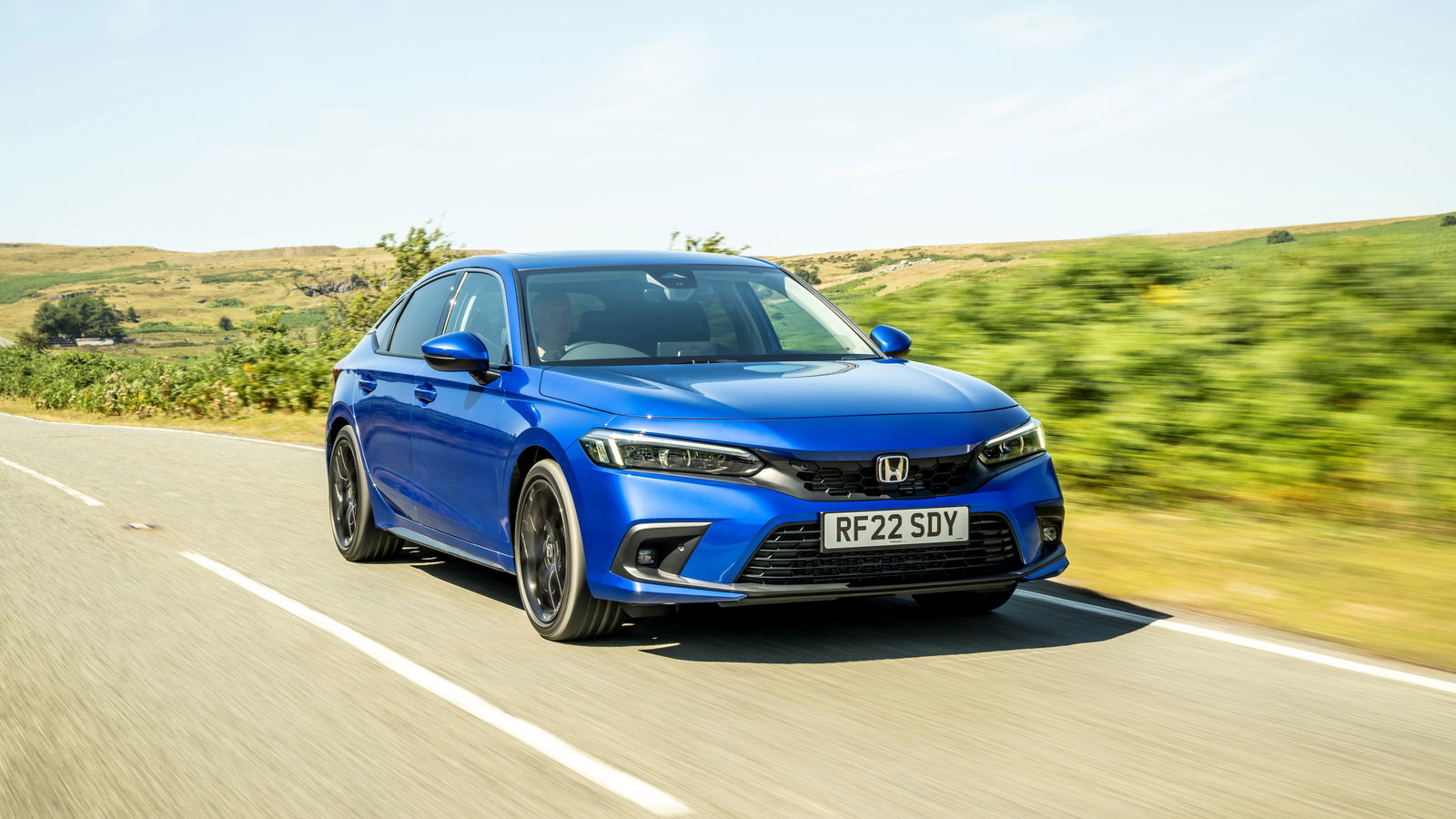
Originally conceived as a budget city run-around, the Civic has morphed into a spacious hatchback over the last 50 years. Now in its eleventh generation, Honda is pitching this all-new – hybrid-only – version as a soft evolution of the previous car’s distinctive shape. So: could this be the best yet?
A FAMILIAR LOOK AND SHAPE
OK, it won’t win any Golden Lion art awards but that doesn’t mean the car you see here isn’t easy to like. Quite the opposite, in fact. There’s clear and obvious similarities between this new model and the one that came before it except, this time around, the design is arguably better resolved.
The silhouette is unmistakably Civic and, irrespective of which of the three grades you settle for, the long wheelbase (+35mm), lower roofline, and strong panel creases combine to give a sporty-looking family-car. Built in ‘Elegance’, ‘Sport’ and our test car’s ‘Advance’ trim, they are all similar.
The only difference on the outside is that entry-level Civics sit on 17-inch alloy wheels whereas the others get 18s. We like the clamshell bonnet and reprofiled front end where the grille has a mesh pattern, and headlights that deploy a total of nine individual LEDs.
Move to the back and the distinctive ‘C’ shape in the LED tail-lights is carried across, while the brake light is integrated into the lightbar that extends across a tail-gate manufactured from lightweight resin composite.
A WELL EXECUTED INTERIOR
The new Civic has not come a moment too soon for Honda as the previous Civic was showing its age against much improved opposition from Skoda’s Octavia, Volkswagen’s Golf and Peugeot’s 308. This was especially evident on the inside because it immediately struck you as dated.
No such problems now, however, as the interior reflects the Japanese car’s price hike with a neat and tidy layout that is easy to gel with. Designers have stuck with physical knobs and softly backlit buttons for the climate control and ventilation functions instead of packing these into the touch operated multimedia system that offers Android Auto on top of wireless Apple CarPlay.
Integrating the air vents into the heart of the dash is a novel idea, and the material choice for the key touch points ensures a premium ambience, although why Honda felt the need to upholster the front and rear seats in ‘Advance’ cars with a real leather-fake leather combination strikes us as being rather odd.
We aren’t sold on the idea of only the most expensive model benefiting from a 10.2-inch digitised driver binnacle, either; ‘Elegance’ and ‘Sport’ make do with a part-digital part-analogue set-up.
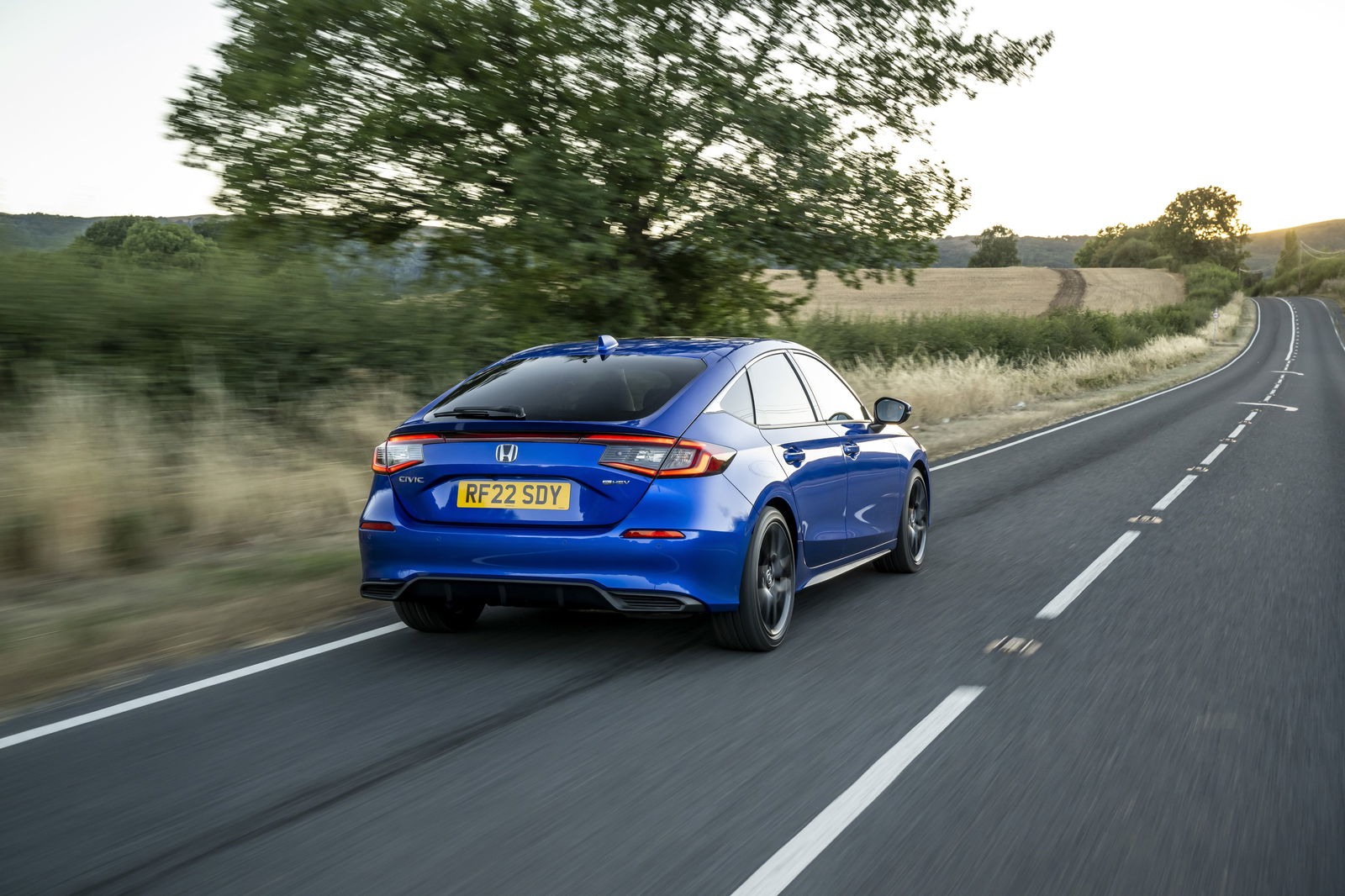
WHAT POWERS IT?
Except for the cabin, some of the biggest changes engineers have come up with are to be found under the skin of the Civic, particularly in relation to the engine and transmission. UK buyers can only choose from a single powertrain which does not work in the way most hybridised cars tend to. Rather than turning the front wheels, the 2-litre petrol lifted from the CR-V acts as a generator for the 1.05kWh battery that powers the front wheels – in most situations – for a relaxed driving experience.
Under heavy load the powerful and quieter four-cylinder engine takes over. Another benefit of this approach is the Civic always feels alert in town as the electric motor divvies up an instant hit of torque for quick getaways at the traffic lights. As for the ‘e-CVT’ transmission, it too is civilised and doesn’t suffer from the jerkiness or laziness of what some rivals offer.
Neither does it give rise to the sudden spike in revs you tend to find in something with a normal CVT box should you stand on the accelerator pedal. Given how rounded and well developed the two systems are, the 56.5mpg quoted by Honda should be quite achievable.
REGEN ON THE MOVE
The flappy paddles behind the steering wheel don’t change gear ratios, but instead raise or lower the regenerative braking. In its highest setting you seldom need to touch the middle pedal in town thus saving on disc and pad wear – though it won’t bring the car to a complete stop. The Civic is quiet in traffic as it spends most of its life in ‘EV’ and that calmness continues over badly repaired or uneven streets.
On the larger 18-inch rims, the complex dampers do a decent job of preventing the ride becoming entirely unsettled – a theme that continues once you get up to speed or hit the motorway. Arguably the best environment to experience the car’s suite of dynamic abilities is in the countryside.
We were mightily impressed by how fun it is through bends and the way the front tyres grip keenly and cut through the most challenging bends without a hint of understeer.
A slick e-CVT box that does a great job of convincing you it is actually a traditional transmission in the way it ‘changes’ as the revs climb under hard acceleration, weighty steering that tells you exactly what is going on with the front axle, and a body that is 19% more rigid than before thanks to clever bracing and trick joint structures, all add to the fun factor and sense of agility.
DIGITAL DISPLAY
Only top level ‘Advance’ cars come with Honda’s customisable 10.2-inch digital instrument binnacle. Clear and easy to read day or night, one of the panes provides to-the-second power output and regeneration levels. The instrument binnacle in lower grade ‘Elegance’ and ‘Sport’ models blend two traditional analogue dials with a much smaller central 7-inch screen.
INTERIOR
The £31,000 list price of our ‘Advance’ test car was offset by an array of creature comforts that included a 12-speaker Bose stereo and subwoofer, wireless smartphone charging, a heated steering wheel and synthetic leather upholstery. All cars have a rear-view camera, front and rear parking sensors, heated front seats, an air purification system and keyless entry and go.
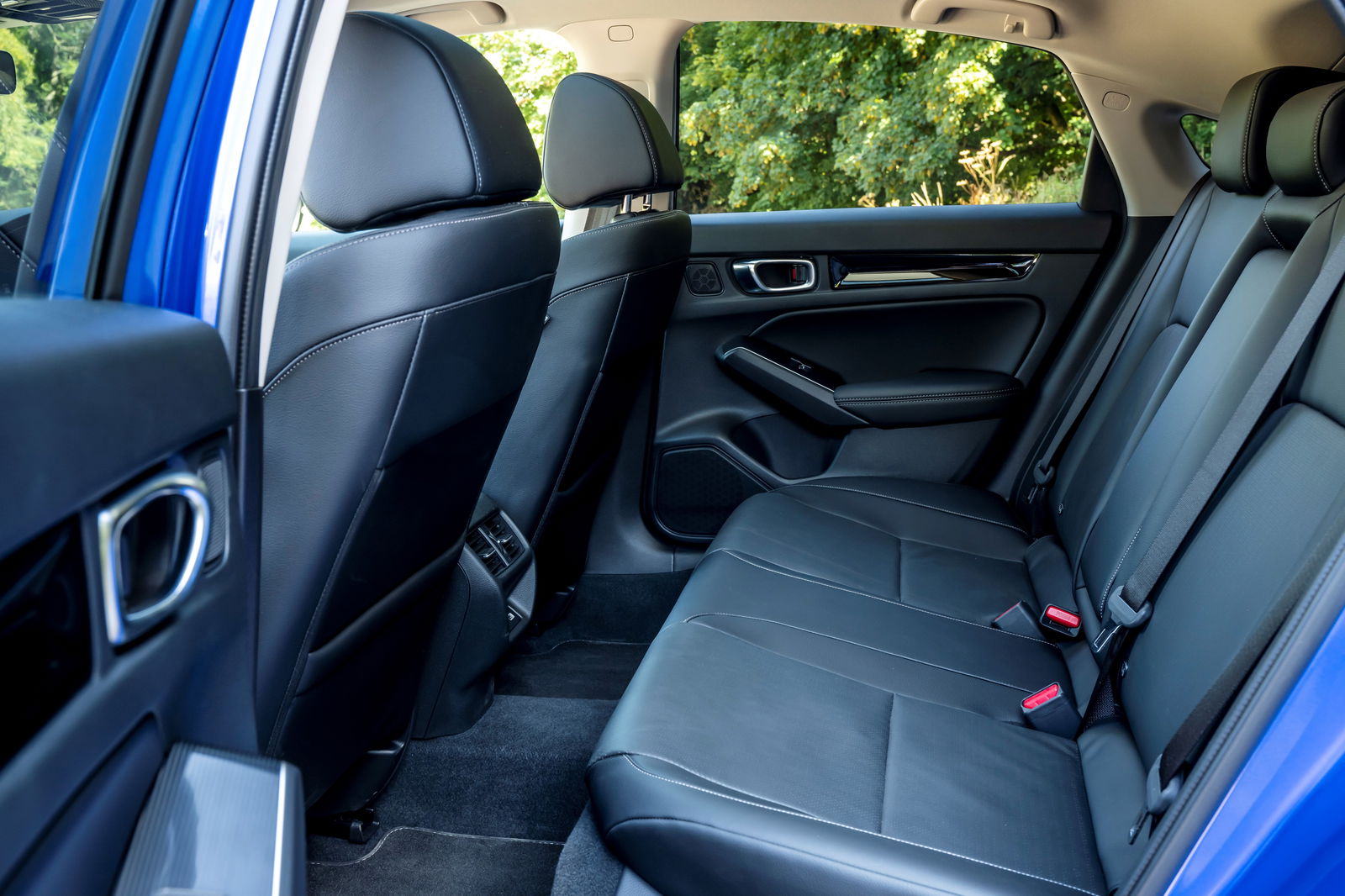
STYLING
Compared to the model it replaces, the all-new Civic’s silhouette is simpler and sharper in all respects. Every model benefit from LED technology front and back and wears alloy wheels. Top-spec ‘Advance’ is treated to gloss black mirror caps and window surrounds while body colours total five in all and include solid grey, metallic red on top of pearlescent black and white finishes.
PRACTICALITY
The sloping roofline on the Civic comes at the expense of headroom in the back. All the usual pockets and cubbies can be found inside, although through-loading isn’t present and USB charge points aren’t compatible with the latest mobile devices. As for space in the boot, 400-litres marginally trumps the facelifted Kia Ceed but trails the Skoda Octavia’s cavernous 600-litres.
PROS & CONS
- Hybrid system is faultless
- Smart evolutionary styling
- Excellent driving dynamics
Range lacks choice
Multimedia not the sharpest
- Roofline eats into headroom
SPECIFICATION
Price: £31,220 (as tested)
Engine: 2-litre, 4cyl petrol electric
Power/torque: 181bhp/232lb ft
Transmission: e-CVT automatic, front-wheel-drive
0-62mph: 7.9 seconds
Top speed: 112mph
Economy/CO2: 56.5mpg/113g/Km
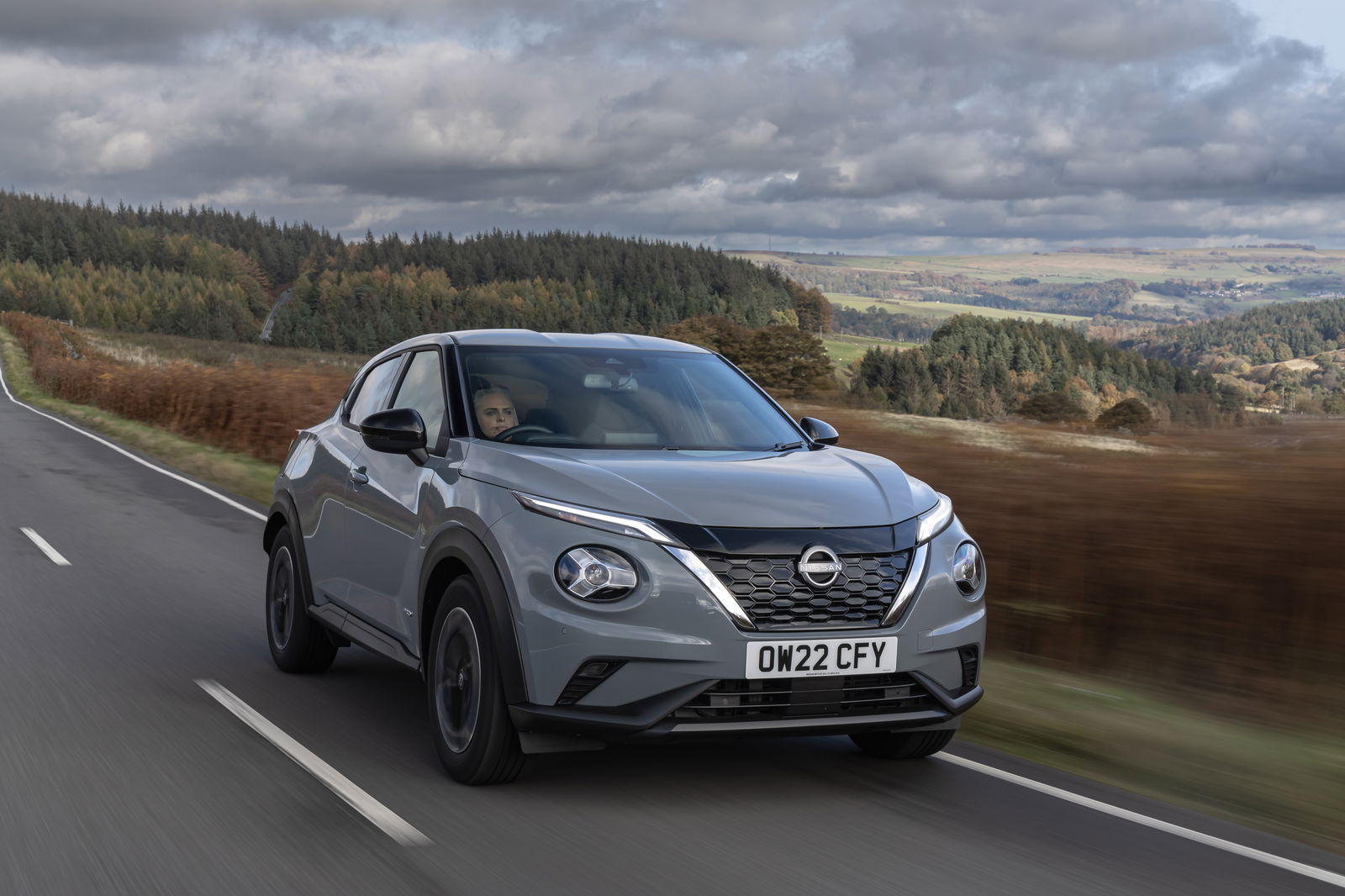
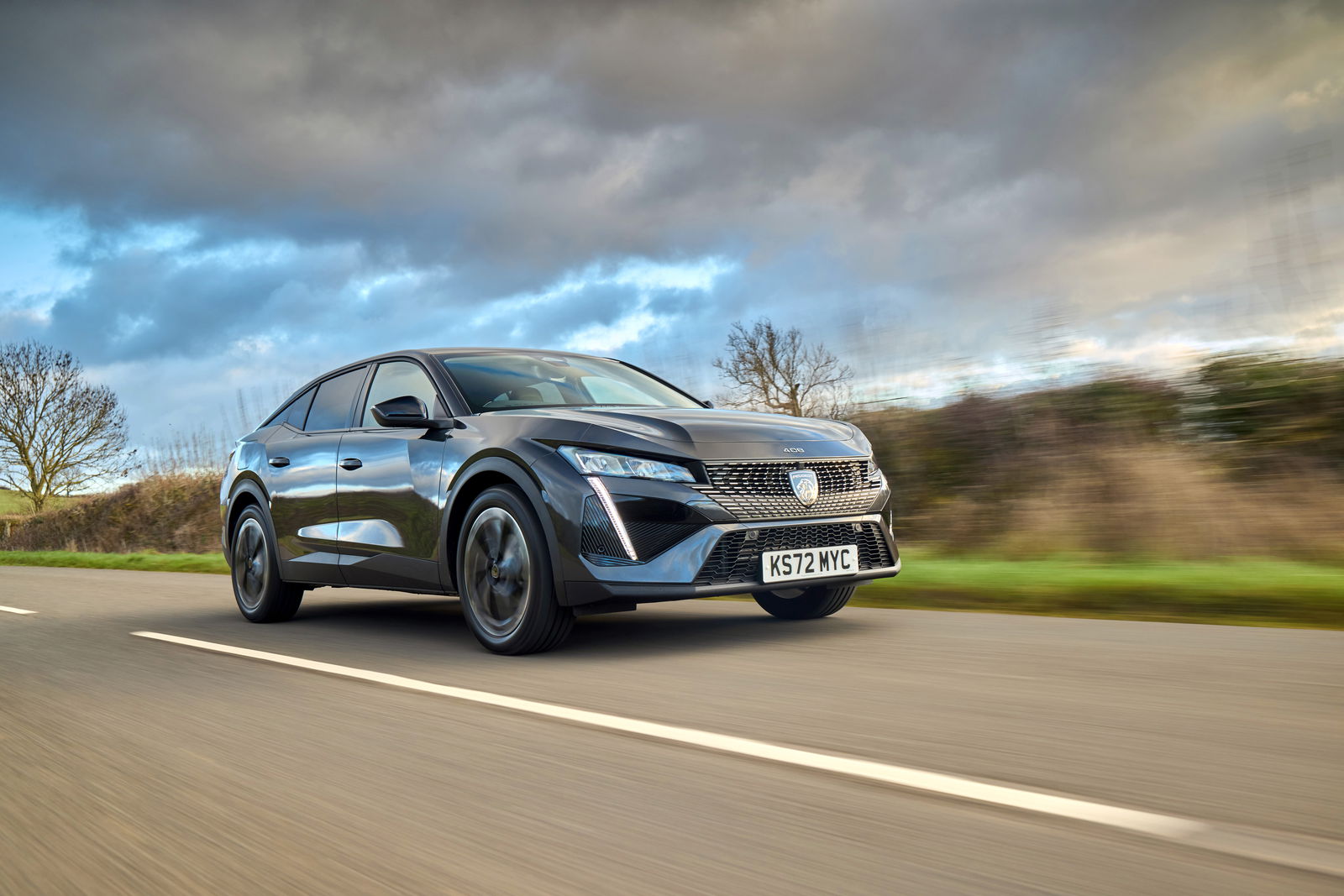
Comments